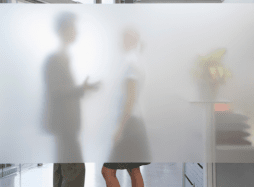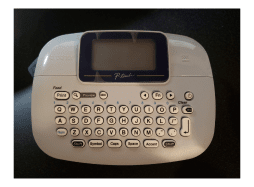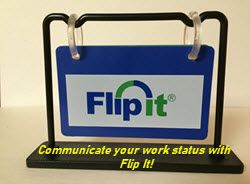Are you feeling lethargic and lacking sufficient energy at work? Do you struggle to stay focused and productive throughout your working day? If so, you’re not alone.
I’ve experienced low energy levels many times in my working career. As a result, it has negatively impacted my productivity and well-being.
Fortunately, there are ways to boost your energy levels and maximize your level of productivity at work. One effective method to boost levels of energy in workplace settings is to utilize the power of light.
In this article, we will explore how light affects energy levels and your mood, the best lighting solutions for energy in the workplace, and tips for optimizing desk placement and incorporating healthy habits to maximize energy levels.
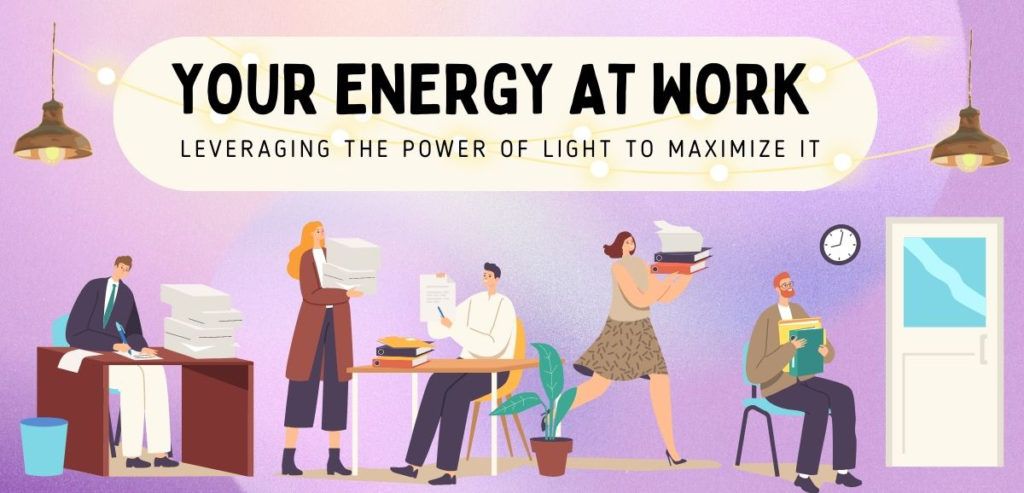
Maximize Energy at Work Utilizing the Power of Light
Light is one of the most powerful tools we have for boosting energy levels and mood. Exposure to natural light has been shown to increase alertness, reduce fatigue, and improve mood.
Conversely, exposure to artificial light can disrupt circadian rhythms, leading to feelings of fatigue and lethargy, causing migraine headaches and eye strain, and creating hormonal imbalance.
Even though the human eye can adapt to low levels of light, inefficient lighting leads to mistakes, a reduction in quality, and low productivity for the worker.
The International Labor Organization reported how light affected employee productivity:
Numerous studies confirm that better lighting pays off through higher efficiency. Improvements in lighting conditions in a number of industries have very often resulted in 10 per cent productivity growth and a reduction in errors by 30 per cent.
International Labor Organization
When it comes to effective workplace lighting, there are two main types to consider: natural and artificial. Natural light, also known as daylight, is the light that comes from the sun.

Artificial light, on the other hand, is any type of light that is produced by a man-made source, such as a light bulb or LED strip.
While natural light is always the preferred option for maximizing energy levels and mood, it’s not always possible to have access to it in the workplace. If you work in a windowless office such as a cubicle or have limited access to natural light, there are still ways to incorporate the power of lighting into your workspace.
Light solutions for windowless rooms are available and can definitely enhance energy levels when implemented.
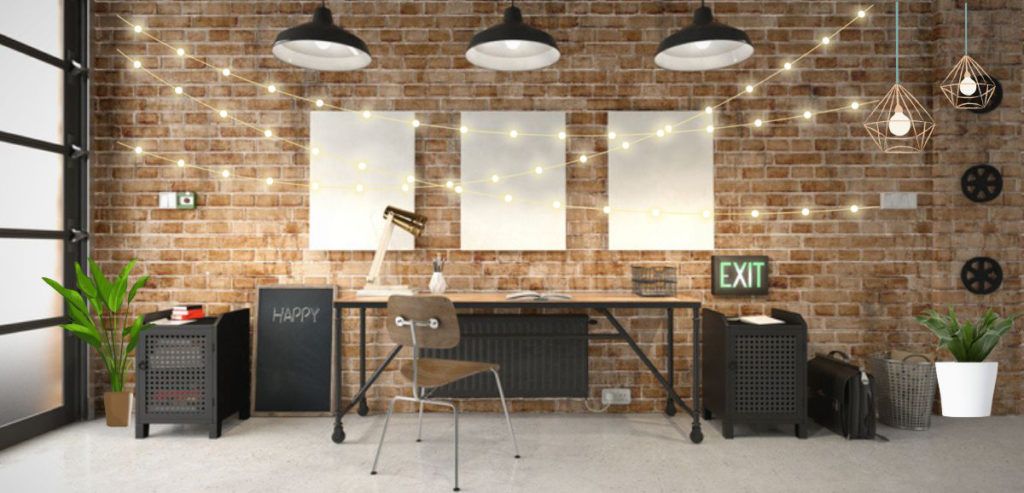
Here are some tips for maximizing the power of ideal lighting to boost energy in the workplace.
1. Leverage the Power of Light
When it comes to artificial lighting, not all types are created equal. Some lighting solutions, such as fluorescent lighting, can be harsh and cause eye strain, while others, such as warm-toned LED bulbs, can create a cozy and inviting atmosphere.
Being able to adjust the color and intensity of the light, as you can with LED bulbs will give you a lot of flexibility at any time of the day. Some LED desk lamps are also equipped with a night light as well as USB ports for charging.
Consider the type of work you do and the mood you want to create in your workspace when selecting the lighting that you decide to implement.
2. Utilize a Natural Light Desk Lamp
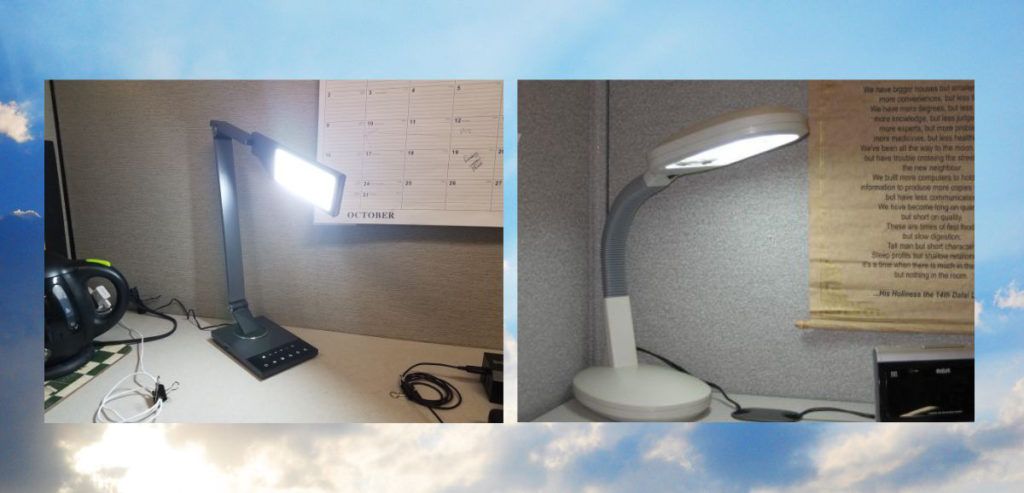
If you have limited access to natural lighting, using a desk lamp can help to mimic the effects of natural light. Look for a lamp with a full-spectrum bulb, which will mimic the natural light spectrum and provide the same benefits as natural light.
A sunlight desk lamp is the perfect solution especially if you work in an office with no windows.
3. Utilize a Natural Light Floor Lamp
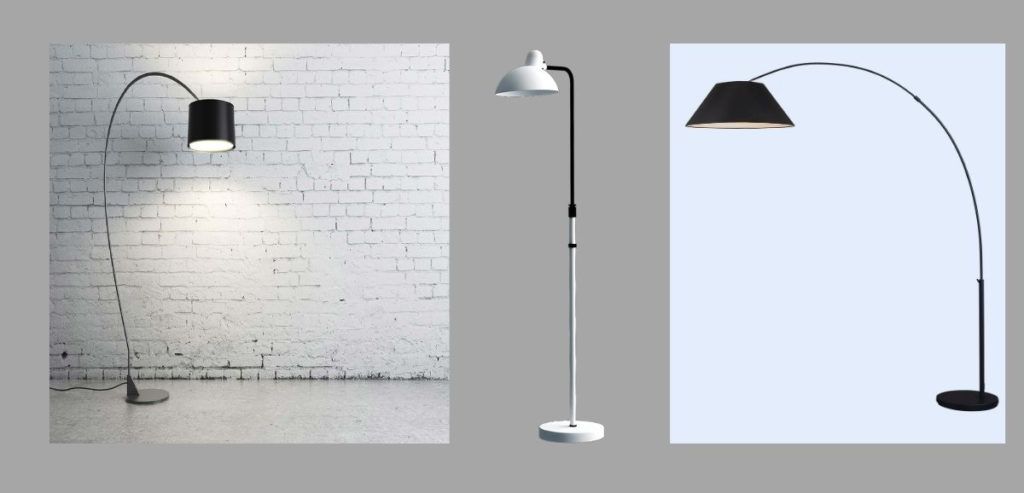
The first time I ever saw a floor lamp in someone’s office it made a huge impression on me. At that time, they didn’t even sell natural light floor lamps but just having it in there completely transformed the workspace. There was almost a glow in that work area and it was almost primarily from that floor lamp.
These days you have a wide variety of natural light lamps from which to choose. They come in all sizes, shapes, and designs. You just have to find the right one for your own working area.
3. Incorporate Daylight-Mimicking Bulbs
Another option for incorporating the benefits of natural light into your workspace is to use daylight-mimicking bulbs. These bulbs are designed to mimic the color temperature of natural light, which can help to reduce eye strain and improve mood.
Daylight-simulating lighting can certainly add to your energy levels especially if you work in a windowless office.
How Does Color Affect Your Energy in Workplace Settings?
Color psychology is the study of how colors affect human behavior and mood. The colors you are surrounded with on a daily basis can have a significant impact on your productivity and on your energy in workplace settings.
So, what are the best colors for office productivity and how should they be utilized in the workplace?
Here are some tips for incorporating color into your workspace to boost energy levels.
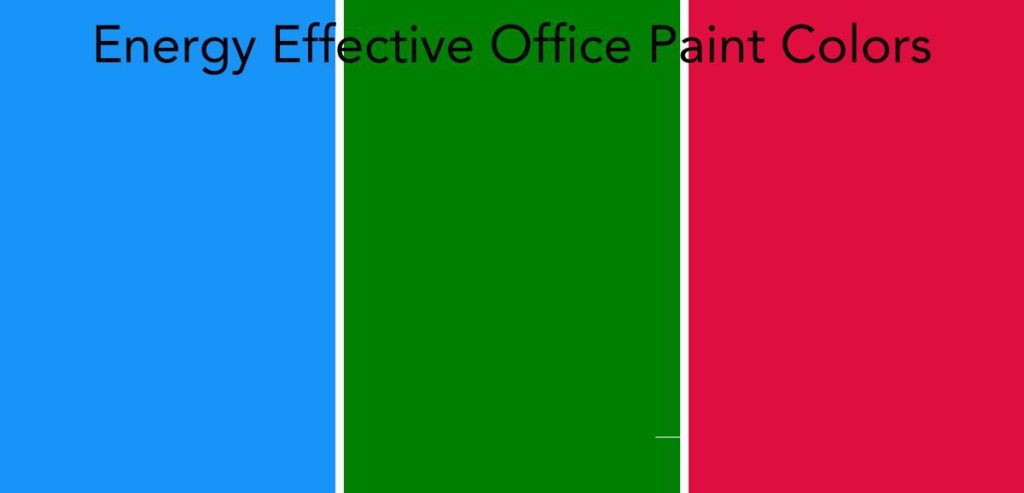
1. Utilize Blue for Focus
Blue is a calming color that can promote focus and productivity. Consider using blue accents, such as a blue chair or blue desk accessories, to help boost your energy levels and focus. Another better option is to paint your wall colors any shade of blue to promote productivity.
2. Utilize Green for Creativity
Green is a restorative color that can promote creativity and relaxation. Consider using green plants or green accent pieces in your workspace to promote a sense of calm and creativity.
3. Utilize Red for Energy
Red is a stimulating color that can promote energy and motivation. Consider using red accents, such as a red desk lamp or red wall art, to help boost your energy levels and motivation.
The color red reflects on strength, passion, and physical power. It’s no wonder that red can stimulate your energy levels at work.
What Are the Best Lighting Solutions for Energy in the Workplace?
1. LED Strip Lights
LED strip lights are a popular choice for workspace lighting because they are energy-efficient and provide a bright, even light.
They are also flexible and can be easily installed under desks or shelves to provide indirect lighting.
LED strip lights can also be utilized in your home to add lighting to a home office or a dark bedroom.
2. Full-Spectrum Bulbs
Full-spectrum bulbs are designed to mimic the natural light spectrum and provide the same benefits as natural light.
They are a great option for those who have limited access to natural light in their workspace.
Implementing these bulbs within a workspace should clearly illuminate the area allowing for the motivating aspects of natural light.
3. Task Lighting
Task lighting is a type of lighting that is designed to provide focused light on a specific task, such as reading or writing. Using task lighting can help to reduce eye strain and improve focus, which can lead to increased energy levels and productivity.
Some examples of task lighting are desk lamps, floor lamps, wall-mounted lighting, as well as under-cabinet lighting. In my cubicle at work there is a light that is underneath my overhead book shelf (the one that opens and closes).
I oftentimes utilize that task lighting to work at when I am not sitting directly at my computer.
4. Energy or Therapy Lamp
By investing in a therapy or energy lamp it should help your energy levels as well as combating Seasonal Affective Disorder in the darker months.
These types of lamps are utilized for about an hour each day and simulate the blue light that you get from the sun.
I use an energy light each day, especially during the winter months, since there is a limited amount of sunlight during these months especially in my office cubicle!
How Does Desk Placement Affect Energy Levels at Work?
The placement of your desk can have a significant impact on your energy levels and productivity at work. Here are some tips for optimizing desk placement to boost your energy levels.
1. Face your Desk Towards Natural Light
If possible, position your desk so that it faces a window or another source of natural light. This can help to increase alertness and reduce feelings of fatigue.
2. Avoid Facing a Wall
Facing a wall can create feelings of confinement and claustrophobia, which can lead to decreased energy levels and productivity. Instead, position your desk so that it faces an open space, such as a doorway or a window.
3. Keep your Desk Organized
A cluttered workspace can be distracting and lead to decreased energy levels and productivity. Keep your desk organized and free of clutter to promote a sense of calm and focus.
Maximizing Energy at Work Using Light Summary
Maximizing energy levels and productivity at work is essential for achieving success and maintaining a healthy work-life balance. Utilizing the power of the proper lighting in your workspace can be an effective way to boost energy levels and promote increased focus and productivity.
By choosing the right lighting solutions, incorporating color psychology, optimizing desk placement, and incorporating healthy habits, you can create a workspace that promotes optimal energy levels and productivity.
Frequently Asked Questions Related to Energy at Work
Can artificial lighting really affect energy levels and productivity?
Yes, exposure to artificial lighting can disrupt circadian rhythms and lead to feelings of fatigue and lethargy. Choosing the right lighting solutions for your workspace can help to minimize these effects and promote increased energy levels and productivity.
How can I incorporate healthy habits into my workspace to maximize energy levels?
There are several healthy habits you can incorporate into your workspace to maximize energy levels, such as taking regular breaks, staying hydrated, and getting enough sleep.
Additionally, incorporating exercise into your daily routine can also help to boost energy levels and promote overall well-being.
Don’t always look for the caffeinated solution to maximize energy levels at work because as quickly as caffeine can lift you up it can also bring you down once the caffeine wears off.
Are there any specific colors or hues of light that can help increase employee energy levels and improve mood in the workplace?
Research has shown that certain colors and hues of light can have a significant impact on employee energy levels and overall mood in the workplace.
Blue light, for example, has been found to promote alertness and cognitive performance, making it a great choice for workplaces that require a lot of focus and concentration.
This type of light is also known to help regulate sleep patterns, which can be especially beneficial for employees who work night shifts or are exposed to artificial light for extended periods of time.
On the other hand, warmer hues of light such as yellow and orange can help create a more relaxing and calming environment in the workplace. This can be particularly useful in areas where employees need to unwind and de-stress, such as break rooms or meditation spaces.
Additionally, these colors can help promote a sense of warmth and comfort, which can be especially important during colder months or in workplaces where employees spend a lot of time indoors.
Overall, choosing the right colors and hues of light can be a simple yet effective way to improve employee energy levels, mood, and overall well-being in the workplace.
What type of lighting is best for promoting employee alertness and focus during the workday?
When it comes to promoting employee focus and alertness during the workday, the type of lighting used in the workplace is paramount. Exposure to natural light can have a significant impact on employee energy levels and cognitive performance. However, this isn’t always possible in every workplace, so artificial lighting, as an only option, is often used as a substitute.
The best type of artificial lighting for promoting employee alertness and focus is typically bright, cool-toned light sources such as LED lights. These lights emit a higher level of blue light, which has been found to help regulate the body’s natural circadian rhythm and increase cognitive performance.
LED desk lamps have become increasingly popular in the past few years as well as LED floor lamps. The ability to adjust the color and brightness make them a go-to item for any workspace.
Additionally, LED lights are energy-efficient and long-lasting, making them a cost-effective and sustainable option for workplaces. I have owned multiple LED desk lamps and floor lamps and have yet to have had to replace the bulbs.
However, it’s important to ensure that the lighting isn’t too bright, as this can cause eye strain and fatigue. The fact that most LED lamps allow for you to adjust the level of brightness as well as the color of the light you can personalize the settings for your own personal needs.
Finding the right balance of brightness and color temperature can help create an environment that promotes productivity and focus without causing discomfort or distraction.
What to Read Next:
- Office Lighting Solutions to Illuminate Your Workspace
- Cubicle Hangers and Cubicle Hooks – Check out my Top 5
- 17 Tips to Being the Best Coworker You Can Be
- When Your Boss Makes You Feel Incompetent [11 Helpful Tips]
- 21 Good Excuses to Work from Home
Bob has been blogging for over 20 years and has been an office and cubicle dweller for more than 35 years. He has been featured in numerous online publications such as US News and World Report, Bustle, and Work Awesome (you can read his articles here). He created the popular office website CubicleBliss in January 2011 and rebranded it as WorkspaceBliss in April 2020.
In the office he’s been an IT Manager, Applications Engineer, Systems Analyst, Software Project leader, and Programmer Analyst in his long career. He’s a Certified Microsoft Professional and possesses a Masters of Science degree and two Bachelor of Science degrees, one of those in Informational Technology.
During his career he has worked in the office full-time, as a hybrid remote worker, and has worked from home permanently.







